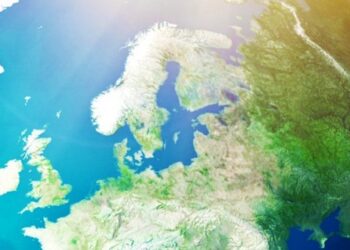The European Commission issued a report, entitled “Towards an implementation strategy for the Sustainable Blue Growth Agenda for the Baltic Sea Region,”, where it presents the results of a systematic stakeholder dialogue in the region. Initiated by the European Commission in September 2016, the dialogue aimed to identify and discuss in greater depth the processes necessary to realise the Baltic Blue Growth Agenda in the coming years.
This dialogue focused on the following mix of thematic areas :
- Shipping;
- Blue bioeconomy (incl. aquaculture);
- Coastal and maritime tourism;
- Environmental and monitoring technology
The report depicts a vision for 2030, that can be summarized in the following:
Shipping
- Digitalisation and green shipping has changed the whole shipping sector across the entire value chain.
- Skilled labour is available at all levels due to adapted education.
- The majority of ships in the Baltic Sea are e-navigation compatible and have some automated functions.
- Shipping and port operations are environmentally sound.
- CO2, SOx and NOx ship emissions are lower.
- A harmonised infrastructure network exists for alternative fuel bunkering and shore-sided electric power supply.
- Shipbuilding remains at the current level of economic importance.
- Shipyards have completed the retrofitting of existing vessels.
Blue bioeconomy
- Digitalisation and green shipping has changed the whole shipping sector across the entire value chain.
- Skilled labour is available at all levels due to adapted education.
- The majority of ships in the Baltic Sea are e-navigation compatible and have some automated functions.
- Shipping and port operations are environmentally sound.
- CO2, SOx and NOx ship emissions are lower.
- A harmonised infrastructure network exists for alternative fuel bunkering and shore-sided electric power supply.
- Shipbuilding remains at the current level of economic importance.
- Shipyards have completed the retrofitting of existing vessels.
- The maritime industry continues to produce high-end, specialised vessels and maritime equipment.
Coastal and maritime tourism
- A broader range of visitors (including from non – EU countries) and offers increase business in non-summer months.
- Capacity limits of destinations are respected.
- Marinas offer an attractive environment year-round.
- The tourism sector closely cooperates with local residents.
- Remote areas of the BSR are better accessible.
- New cross-cutting products and services exist for specific target groups.
- A pan-Baltic data portal on maritime tourism with common indicators exists.
- Nature tourism offers many package deals in combination with other tourism sectors.
- Cruise tourism is the gateway for many international tourists coming to the BSR.
- More European senior citizens travel to the BSR.
- Local businesses, citizens and authorities drive maritime tourism.
- Both the tourism industry as well as the visitors highly value sustainability.
- The Good Environmental Status status of the Baltic Sea is an indispensable prerequisite for tourism
Environmental and monitoring technology
- EMT is an economically relevant blue growth sector itself.
- An integrated knowledge platform for EMT in the BSR supports a sustainable maritime economy exists.
- Affordable, robust, standardized technologies and systems enable long-term operations for the user and economies of scales for the producer.
- Easy exchange of transnational and sectoral data through standards and agreed communication pathways.
- Infrastructure is in place to deal with the demands of big data analytics.
- A virtual Baltic Data Centre exists with public and private data available through a flexible open data policy.
- Environmental monitoring is carried out on a transnational level by local, private companies in cooperation with public research institutions.
- Operational monitoring provides on-demand services according to the different sectoral needs and based on a functioning business model.
- The BSR is globally recognized for its monitoring technology expertise (also in harsh environments).
- A “BSR Cluster” is setting the technological standards for (parts of) monitoring technology.
The official report’s Executive Summary may be viewed herebelow:
Explore more by reading the full report here.































































